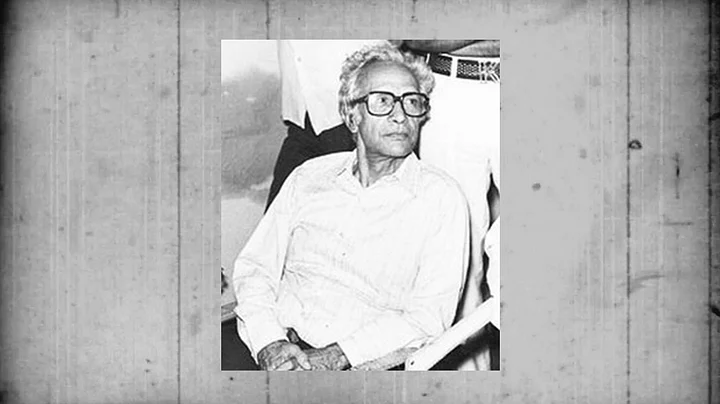Chetan Anand, along with his brothers Dev and Vijay, was a leading light of the golden age of Hindi cinema. Born and raised in Lahore, Chetan worked at BBC, and then Doon School, Dehradun before moving to Bombay to become an actor. His political beliefs thanks to his association with the Indian People’s Theatre Association (IPTA) made him realise the reach of cinema as a mass media tool. He decided to become a director, slowly and steadily, carving his own niche like his siblings. But the bigger success of his younger brothers has cast a shadow on his existence in popular memory, and this is purely unjust.
On his death anniversary, we remember the remarkable writer and director through some of his memorable works.
Neecha Nagar (1946)
Chetan Anand’s first film was an adaptation of Maxim Gorky’s socialist play, The Lower Depths, which also inspired Jean Renoir and Akira Kurosawa to make cinematic versions of it in their respective countries. A socially-conscious film on the divide between the rich and the poor, it was hailed at Cannes Film Festival where it shared the top prize, Grand Prix, becoming the first Indian film to gain international recognition. Sadly, it failed to find any takers in our country. No distributor came forward to take the risk of a film populated by new faces, and specially not when theatres were charging heavy rentals. It sank without a trace. By then, Chetan’s brother Dev was flourishing as a young star and both the brothers decided to float a film company, Navketan, meaning ‘new banner’.
Taxi Driver (1954)
Post Baazi (1951), a friend of Dev Anand suggested that he make a film on a taxi driver, to cash in on his rough and tough character’s success. A couple of flops had rendered Chetan depressed, and Dev passed on the taxi driver idea to him. Vijay Anand, writing and directing plays while studying at St. Xavier’s College, was asked to write the script. Launched at a shoestring budget, it was mostly shot on locations in Bombay, with a very handy French Eclaire camera. They shot from morning till late evening for 35 days at a stretch, with a small working unit. The film was remarkable for two reasons, it was the first hit of Chetan Anand’s career, and the lead pair, Dev Anand and Kalpana Kartik secretly got married during the making.
Haqeeqat (1964)
The Sino-Indian War of 1962 brought crushing defeat for India, and reappraisal of Nehruvian socialism. A wave of patriotism swept through the country, and India’s inability to expect China’s aggression in the war made the government rethink its military might. Many IPTA artistes came together to make this film on China’s treachery, and the Indian government offered great support for its realisation. It was the first Indian film to be shot in Ladakh, and the icy cold location and its harshness augmented the plight of the soldiers on screen. Under Chetan’s direction, the film was fashioned as a tribute to Nehru and the sacrifice of the jawans. It made millions of Indians cry for their beloved country. With the sadness laden Ab tumhare hawale watan saathiyon as its highlight, it remains the best war film India has ever made.
Heer Raanjha (1970)
Waris Shah’s epic rendition of Heer Raanjha is legendary but in Kaifi Azmi’s poetic imagination, it got a new life, thanks to his terrific screenwriting. The tragic romance was told in couplets instead of dialogues, and it remains a beautiful outlaw in the confines of mainstream Hindi cinema conduct. Chetan Anand’s skill as a director is evident in his handling of the subject, but alas, the film was saddled by the uninspired casting of the beautiful but untalented Priya Rajvansh, his real-life love.
(The writer is a journalist and a screenwriter who believes in the insanity of words, in print or otherwise. His Twitter handle is: @RanjibMazumder)
